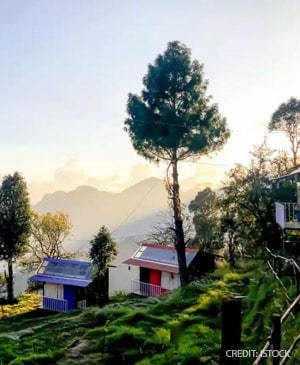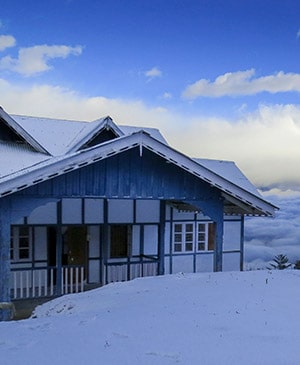Birding In Nagaland
Arunachal Pradesh and Assam may be reckoned as the big boys of birding tourism in Northeast India, but the tiny state of Nagaland is no underdog.
It is here, in Nagaland, that an international team of ornithologists observed about a million Amur Falcons roosting in the autumn season a couple of years ago, and were inspired to dub Nagaland as ‘the falcon capital of the world.’ Few places on our wonderful planet see such huge gatherings of falcons at a time.
It is in Nagaland that one still stands a chance to watch one of the world’s rarely sighted birds: Yellow-throated Laughingthrush. An avian speciality, this little Laughingthrush was almost feared extinct until it was rediscovered in – where else? – eastern Nagaland in the year 2010. Since then, it has become a sort of holy grail for the birdwatchers on the birding tour of Nagaland.
So, Nagaland may be small and not as vigorously advertised as some of its neighbours, but its birding potential is immense.
Over 500 species of birds have been observed in Nagaland, but the latest checklists collating data from multiple sources put the number as high as 731. Having done birding in Nagaland over the years, we’ve seen the checklists expand and modify – what with the species splits and regroupings – and we don’t doubt that Nagaland is probably a much bigger birding hotspot of India than usually said to be.
Predominantly a mountainous state, Nagaland boasts geography comprising of hills, scrubby plains, grasslands, evergreen tropical and sub-tropical forests, and a host of rivers. The Naga Hills span the width of the state, rising from the modest height of 610 meters at the Brahmaputra Valley in the west to the impressive elevation of Mount Saramati at 3841 meters in the southeast, where the hills form a natural border with Myanmar. Within this mountainous curve, an ecosystem abounding in flora and fauna thrives. A wide range of mammals flourish in this region, and the woods are thick with palms, rattan, timber, mahogany, eucalyptus and bamboo. In short, a fine natural setting for avifauna to prosper.
Blyth’s Tragopan, a galliform species, is the state bird of Nagaland, and the Great Indian Hornbill, a bucerotiformes, enjoys a pride of place in the culture of Naga people. But that is not to say that birds aren’t hunted in Nagaland. Hunting and poaching has been a festering problem here for long, but smart conservation measures coupled with a ban on hunting in areas such as Khonoma in the south of Nagaland, has helped prevent Blyth’s Tragopan from suffering a fate worse than the ‘vulnerable’ listing on IUCN.
Today, Blyth’s Tragopan is the major draw for Nagaland birding tours at the Khonoma Nature Conservation and Tragopan Sanctuary, situated just 20km to the west of the state’s capital Kohima. Formerly a hunting and poaching ground, Khonoma is now an exemplary success story in terms of bird conservation and protection. It is one of the Important Birding Areas of Nagaland and home to some of the exotic birds such as Mountain Bamboo Partridge, Naga Wren Babbler, Grey-cheeked Warbler, Grey-crowned Warbler, Black-eared Shrike-Babbler, Spot-breasted Scimitar Babbler, Rufous-capped Fulvetta, Chestnut-vented Nuthatch and Flavescent Bulbul.
A day of Nagaland birding at Khonoma Tragopan Sanctuary is usually full of avian action. The sweet singing of Naga Wren Babblers is rivalled by the melodious cooing of Spot-breasted Laughingthrushes. A Yellow-throated Laughingthrush may be hard to come by, but a bit of poking around rewards you with Striped Laughingthrush, Spot-breasted Laughingthrush, Grey-sided Laughingthrush, and Assam Laughingthrush. Crested Finchbills and Grey Sibias are a common sight. Crested Serpent Eagle and Mountain Hawk Eagle are the usual suspects among raptors.
If Amur Falcon happens to be on your wishlist, the best place to explore is Doyang reservoir at Pangti Village in Wokha district. This village made the headlines for the wrong reasons in 2012 when a documentary exposed the mass killing here of Amur Falcons, the migratory raptors from Russia that stop by at this village for a layover every year before the onward journey to their wintering grounds in southern Africa. Following the shocking revelation, a massive conservation campaign was launched and helped the Pangti village become a safe haven, rather than the killing fields, for Amur Falcon. Thanks to this transition, Doyang reservoir now teems again with thousands – perhaps millions – of Amur Falcons in the autumn months of September and October.
Amur Falcon can also be spotted at Fakim Wildlife Sanctuary at Pungru, about 300 km from Kohima. This sanctuary, located in the toes of the Saramati Mountain range close to the India-Myanmar border, is also a safe bet to find the Holy Grail of the birds of Nagaland – Yellow-throated Laughingthrush. Years of organizing birding trips in Nagaland has taught us that this little beauty prefers grasslands to forests, and may even be seen in groups. This stunner apart, Fakim hosts a lot of avian treasures such as Ferruginous Flycatcher, Slaty Blue Flycatcher, Spot-breasted Parrotbill, Slender-billed Oriole, Streaked Spiderhunter, Rufous-capped Babbler, Green-backed Tit, Long-tailed Minivet, Large Hawk-Cuckoo, Yellow-breasted Greenfinch, White-browed Laughingthrush, Moustached Laughingthrush, Striped Laughingthrush, and Oriental Honey Buzzards.
An equally impressive variety of birds is found at Ntangki National Park and Rangapahar National Park close to the city of Dimapur on Nagaland’s western border with Assam. Here, one may notch up hornbills, woodpeckers, drongos, bluebirds, minivets, barbets, green pigeons, bulbuls and thrushes. The specialties include Spot-winged Starling, Green-billed Malkohas, Brown Hornbill, White-Winged Duck and Black-headed Bulbul.
India Birding Tours has the wide reach to cover all the important birding hotspots of Nagaland. We’ve explored the state with birders, ornithologists and conservationists of repute, and we know well the bird species and the areas they are likely to inhabit. Our Nagaland birding tour can also be dovetailed with the birding trips of Assam and Arunachal Pradesh for a wholesome birding expedition in Northeast India. Together, these three states make for a perfect Indian birding holiday.






